
LOADING ...
In response to evolving domestic opinion, eMedals Inc has made the conscious decision to remove the presentation of German Third Reich historical artifacts from our online catalogue. For three decades, eMedals Inc has made an effort to preserve history in all its forms. As historians and researchers, we have managed sensitive articles and materials with the greatest of care and respect for their past and present social context. We acknowledge the growing sentiments put forth by the Canadian public and have taken proactive actions to address this opinion.
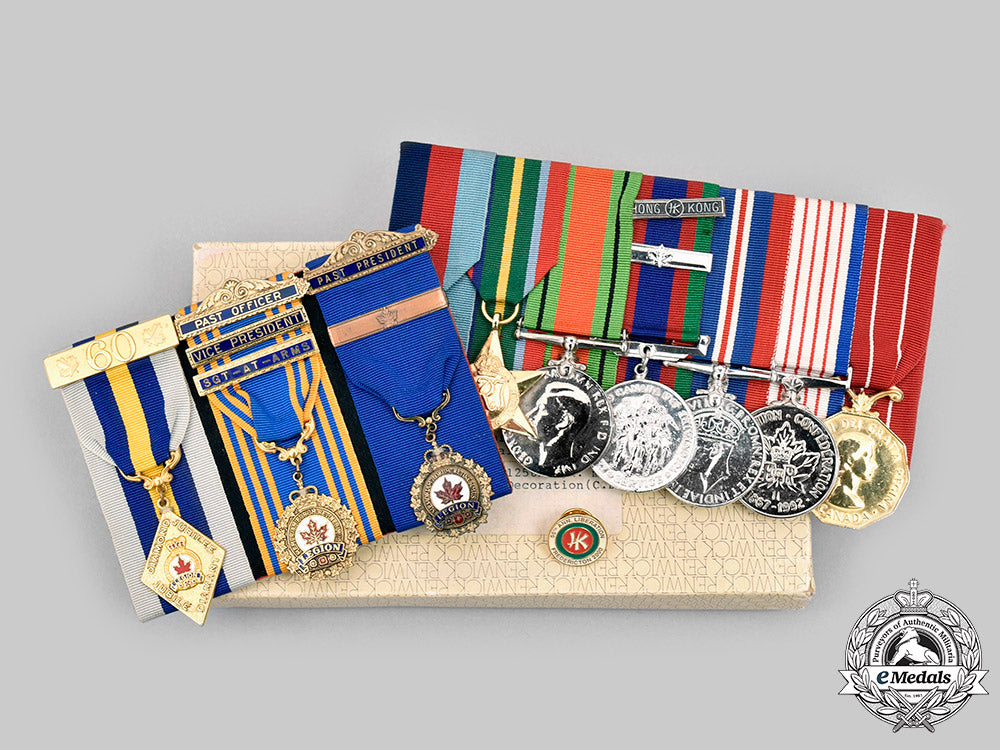
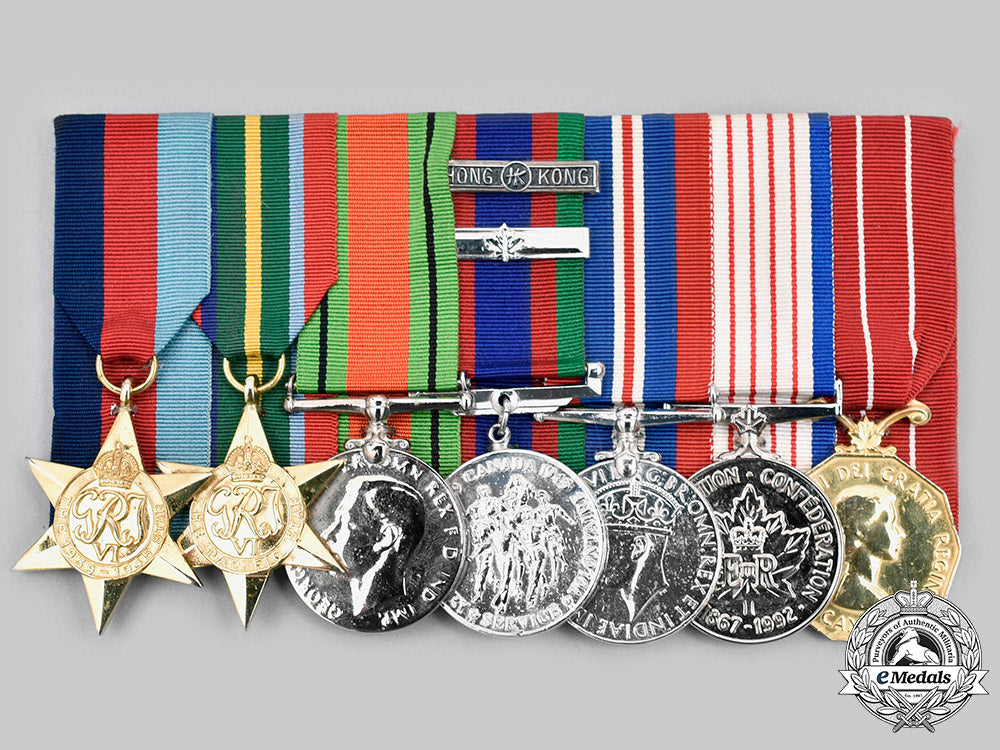
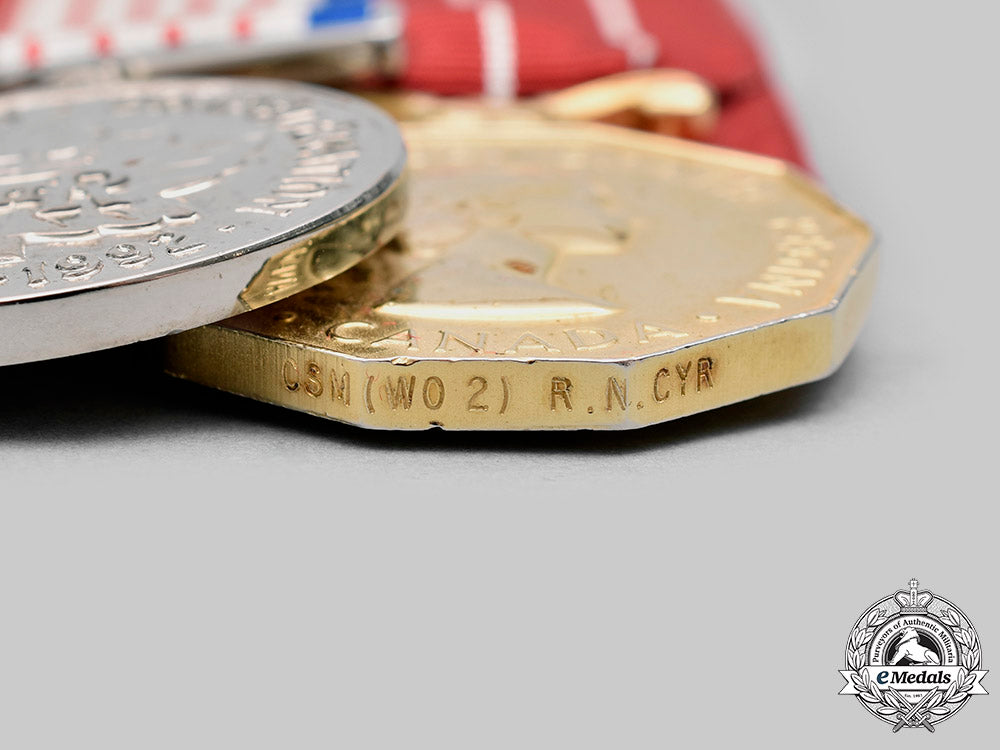
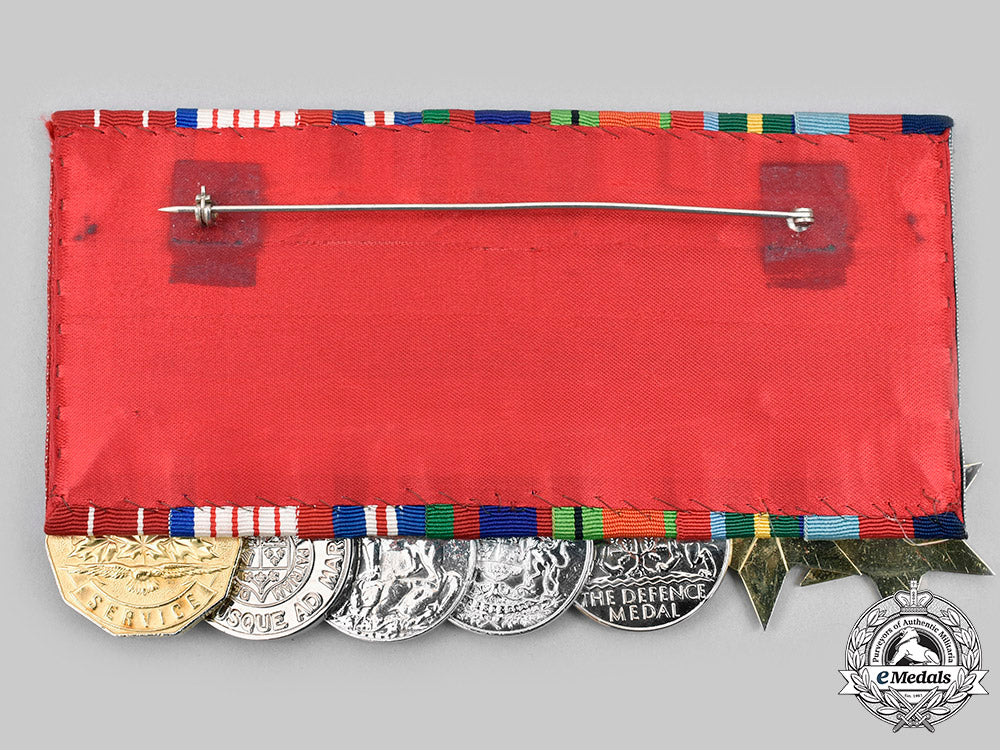
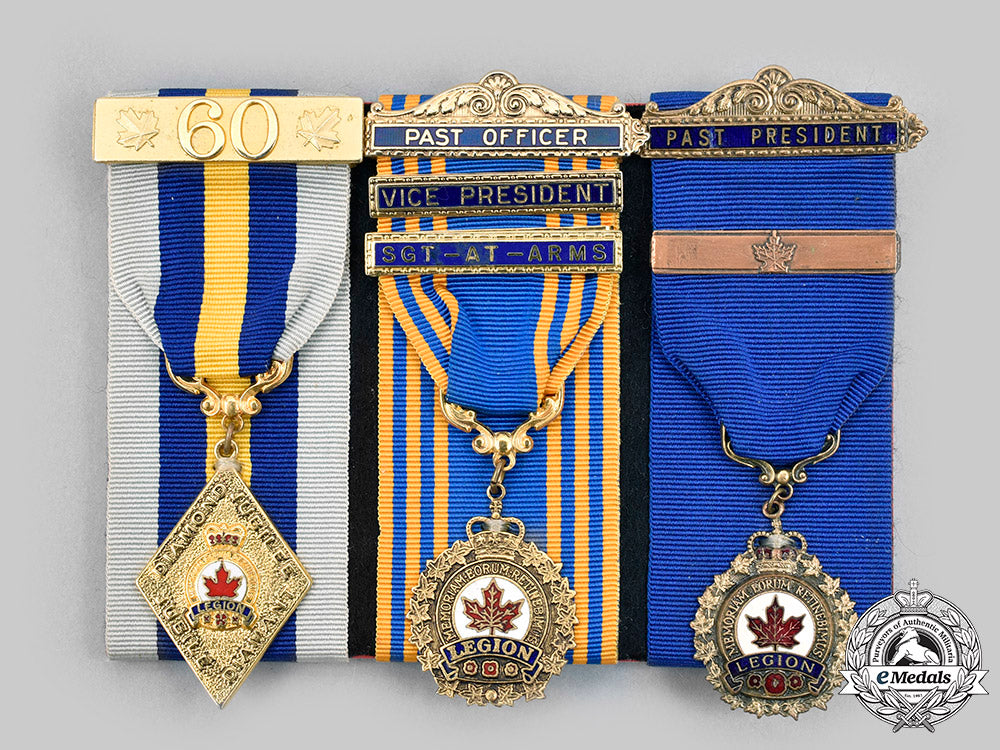
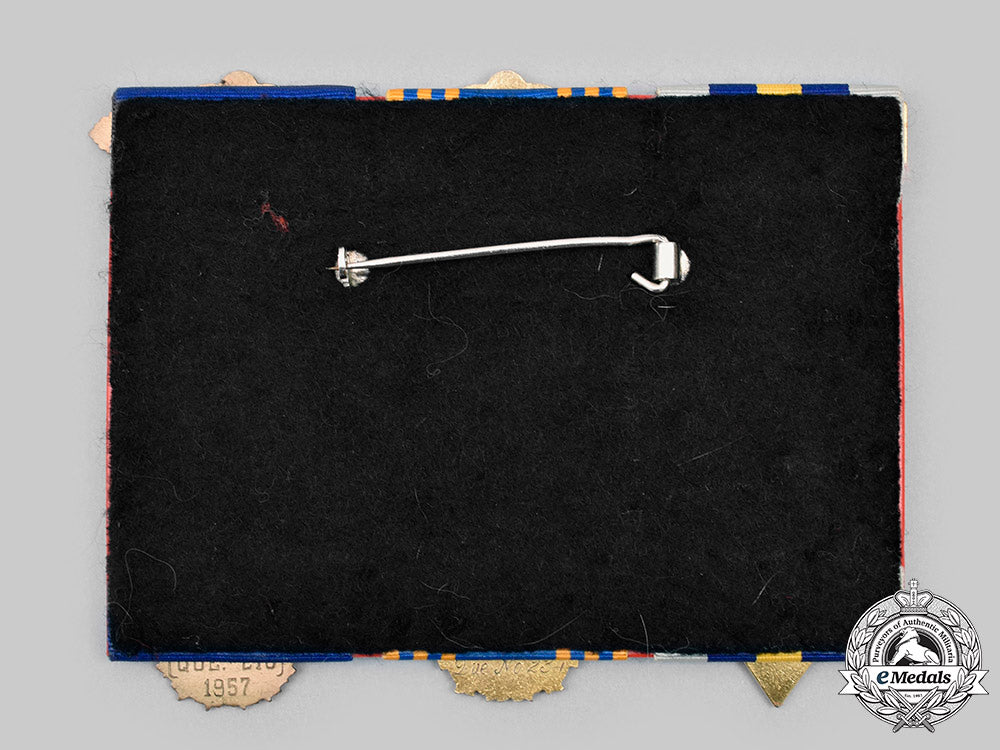
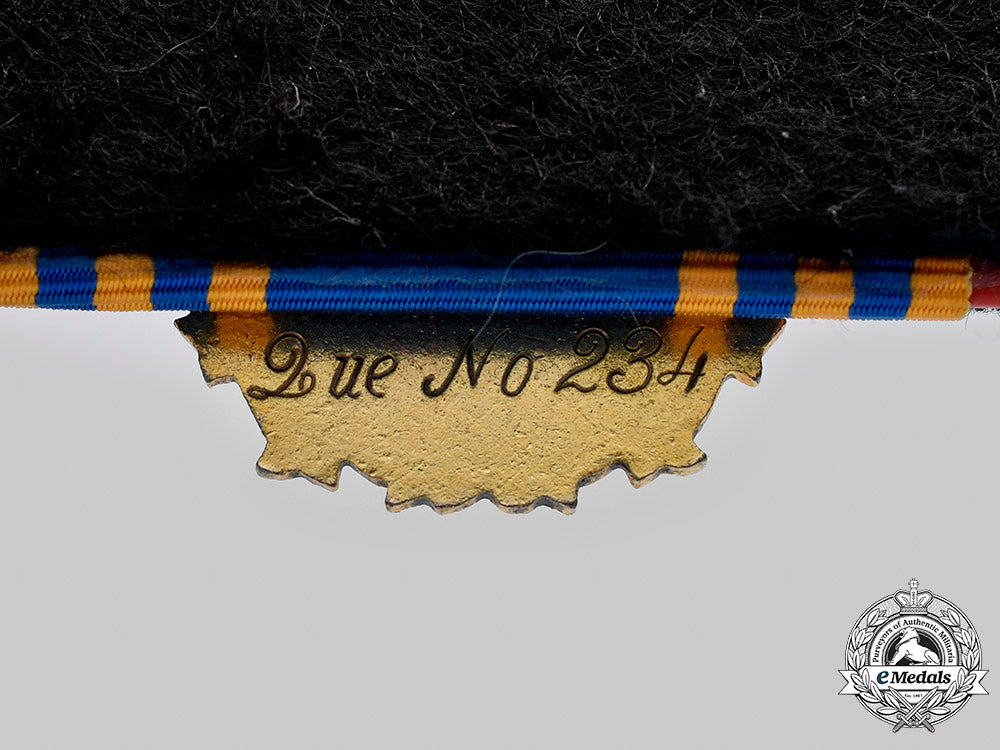
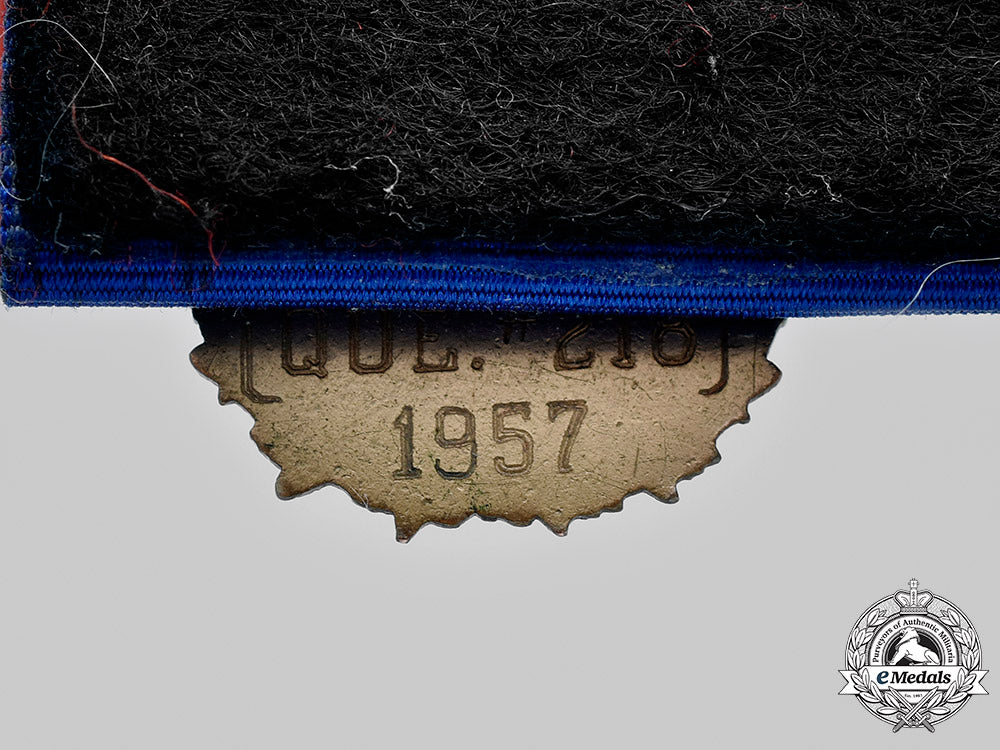
Canada, Commonwealth. A Hong Kong Pow Group To W.o. Roger Cyr, President Of Hong Kong Veterans Association
Canada, Commonwealth. A Hong Kong Pow Group To W.o. Roger Cyr, President Of Hong Kong Veterans Association
SKU: ITEM: M0444-4
Current Bid:
Your Max Bid:
Bid History:
Time Remaining:
Couldn't load pickup availability
Shipping Details
Shipping Details
eMedals offers rapid domestic and international shipping. Orders received prior to 12:00pm (EST) will be shipped on the same business day.* Orders placed on Canadian Federal holidays will be dispatched the subsequent business day. Courier tracking numbers are provided for all shipments. All items purchased from eMedals can be returned for a full monetary refund or merchandise credit, providing the criteria presented in our Terms & Conditions are met. *Please note that the addition of a COA may impact dispatch time.
Shipping Details
eMedals offers rapid domestic and international shipping. Orders received prior to 12:00pm (EST) will be shipped on the same business day.* Orders placed on Canadian Federal holidays will be dispatched the subsequent business day. Courier tracking numbers are provided for all shipments. All items purchased from eMedals can be returned for a full monetary refund or merchandise credit, providing the criteria presented in our Terms & Conditions are met. *Please note that the addition of a COA may impact dispatch time.
Description
Description
Group of Seven: 1939-1945 Star; Pacific Star; Defence Medal; Canadian Volunteer Service Medal with Overseas Clasp and Hong Kong Clasp; War Medal 1939-1945; 125th Anniversary of the Confederation Medal 1867-1992; and Canadian Forces' Decoration, QEII (CSM (WO2) R.N. CYR). Court-mounted, with swing bar pinback as worn by the veteran, plated, replacement ribbons, light contact, very fine. Accompanied by a Royal Canadian Legion Group of Three: Diamond Jubilee Year Medal 2012 (in bronze gilt with red, white and blue enamels, measuring 28.2 mm (w) x 40 mm (h), suspended from a hanger inscribed "60"); Past Officer Medal, 2 clasps - SGT-AT-ARMS, VICE PRESIDENT (in bronze gilt with red, white and blue enamels, measuring 27.5 mm (w) x 33 mm (h), suspended from a hanger inscribed "PAST OFFICER"); and Past President Medal with maple leaf clasp (in bronze gilt with red, white and blue enamels, measuring 27.3 mm (w) x 31.5 mm (h), suspended from a hanger inscribed "PAST PRESIDENT"), court-mounted, with swing bar pinback, original ribbons; and a Hong Kong Veterans 55th Anniversary Liberation Celebration at Fredericton 2000 Lapel Badge (in bronze gilt with red, white and green enamels, measuring 19.3 mm in diameter, push pin). Very fine.
Roger Napoleon Cyr was born on March 6, 1922, the oldest of four brothers and four sisters, in New Richmond, Quebec. His father was employed as a lineman for an electrical company in the United States, eventually returning to Canada to work as a chef with Canadian National Railways.
Cyr enlisted in late 1941 with the Royal Rifles of Canada. Two Canadian regiments were sent to defend the Crown territory, the Royal Rifles of Canada, a bilingual unit from the Quebec area, and the Winnipeg Grenadiers, representing Western side of Canada, totalling 1,975 soldiers. Although it was expected that these soldiers would only see garrison duty, they were quickly involved in hand to hand combat Japanese 38th Division. In late October 1941, he embarked from Vancouver aboard the Awatea, escorted by the HMCS Prince Robert, arriving in the British colony of Hong Kong on November 14.
On December 22, 1941, the Royal Rifles were on Stone Hill during the Battle of Hong Kong. Cyr was a runner, in charge of inter-communication networks between the officers, NCOs and the troops. Upon being asked to stand and receive orders from his officer, Cyr recalls “While I'm talking to him there's all kinds of movement okay around. See I look around and it's full of Japanese okay and Ross says "fix bayonets" and everybody put their bayonets on their rifle and as soon as he said fix bayonet all of a sudden his whole face sort of almost disappeared. He got a he got eh a, he got a bullet in the face and all the blood came down and covered all his face and I couldn't see it in the dark alright, but he was killed instantly. So I stooped down and felt his pulse and said "Well it's too bad he's gone.", you know, I tell you this is cruel world and I picked up his revolver, his map case and his binoculars, picked all that up and uh, and by this time all kinds of bullets flying and all kinds of bonsais going on and kinds of yelling and people are getting killed and people are getting stuck and I'm fighting like hell and I'm sticking where ever I can and my recollection of that night is like surreal.”1
Cyr was taken prisoner in Hong Kong on Christmas day, December 25, 1941. After the silence fell around his location, he and his crew were incorrectly informed that the war was over. They were subsequently surrounded by Japanese soldiers who then contained them in a tennis court for 14 days. He and his platoon were held at Camp North Point, Hong Kong Island until September 26, 1942. Afterwards, they were moved to Camp Shamshuipo, in Kowloon, Hong Kong.
On January 19, 1943, Cyr was taken by sea from Hong Kong to Japan on a ship called Tatsuta Maru. In his interview with Veterans Canada, Cyr states that there were 40 to 50 were confined in one space. He spent 11 days in the hospital of the ship, prior to then boarding an electric train from Nagasaki to Yokahoma A total of 250 Canadians were contained in Camp Tsurumi (also called Camp 3D), located in Kawasaki. Cyr was given the number 209. He was employed as a riveter and worked in the shipyard, weighing only 89 pounds. While at this Camp, Cyr survived brutal beatings at the hands of Japanese Officers, one of which was endured after he was wrongfully accused of stealing a pair of boots. He spent several days in the hospital being treated after this traumatizing interaction.
In May 1945, the platoon was moved to Camp Yumoto on the Island of Honshu, and Cyr was to work in the coal mine. Prior to the involvement of the POWs, the mine was abandoned due the dangerous nature of the work. Cyr was chosen to work underground because he had picked up on Japanese and was able to communicate with the officers. It was here, 4000 feet underground that he met a Japanese officer that he was able to converse with in French. This officer aided Cyr in getting him a nori mashi job so that he was no longer working underground. He recalls terrible treatment from the civilian guards and stated in his interview that the general life expectancy of his group was 3 months, should the war have continued. The day the war ended, the prisoners working in the mine were rounded up above ground and addressed by Emperor Hirohito via loudspeaker. They were informed about the atomic bombs dropped on Hiroshima and Nagasaki. Following this announcement, the POWs spent a few days waiting at the camp. A small American plane flew overhead and dropped a package of Camel cigarettes around a paper informing them that a peace treaty would be signed aboard the USS Missouri the next day at 1400 hours.
After returning to Canada, Cyr became extremely active in the Hong Kong Veterans Association. He held numerous offices including President of the Quebec Maritime Branch, Secretary of the National Council, and eventually National President. In 1993, Cyr attended a delegation that went to Geneva to address a press conference, at which he told the story of the Veterans of Hong Kong. He offered his experience as a Prisoner of War in Hong Kong and Japan, bringing the attention of the international community to the issue. In 1998, the Canadian government granted compensation of $24,000 to surviving veterans of the Battle of Hong Kong or their widows for the forced labour and hardships they endured. This was due to years of discussions, dedication and perseverance of Roger Cyr. He stood with the Governor-General of Canada during the Remembrance Day ceremonies at the National Cenotaph in Ottawa in 1998 to honour his untiring service to veterans. Roger Cyr died on May 26, 2001 after a courageous fight with cancer.
Cyr’s experience is captured by Veteran Affairs Canada in numerous short interviews complete with video and written transcripts which can be found here: https://www.veterans.gc.
1.Transcript from “Runner (inter-communication between officers, NCOs and troops): https://www.veterans.
Description
Group of Seven: 1939-1945 Star; Pacific Star; Defence Medal; Canadian Volunteer Service Medal with Overseas Clasp and Hong Kong Clasp; War Medal 1939-1945; 125th Anniversary of the Confederation Medal 1867-1992; and Canadian Forces' Decoration, QEII (CSM (WO2) R.N. CYR). Court-mounted, with swing bar pinback as worn by the veteran, plated, replacement ribbons, light contact, very fine. Accompanied by a Royal Canadian Legion Group of Three: Diamond Jubilee Year Medal 2012 (in bronze gilt with red, white and blue enamels, measuring 28.2 mm (w) x 40 mm (h), suspended from a hanger inscribed "60"); Past Officer Medal, 2 clasps - SGT-AT-ARMS, VICE PRESIDENT (in bronze gilt with red, white and blue enamels, measuring 27.5 mm (w) x 33 mm (h), suspended from a hanger inscribed "PAST OFFICER"); and Past President Medal with maple leaf clasp (in bronze gilt with red, white and blue enamels, measuring 27.3 mm (w) x 31.5 mm (h), suspended from a hanger inscribed "PAST PRESIDENT"), court-mounted, with swing bar pinback, original ribbons; and a Hong Kong Veterans 55th Anniversary Liberation Celebration at Fredericton 2000 Lapel Badge (in bronze gilt with red, white and green enamels, measuring 19.3 mm in diameter, push pin). Very fine.
Roger Napoleon Cyr was born on March 6, 1922, the oldest of four brothers and four sisters, in New Richmond, Quebec. His father was employed as a lineman for an electrical company in the United States, eventually returning to Canada to work as a chef with Canadian National Railways.
Cyr enlisted in late 1941 with the Royal Rifles of Canada. Two Canadian regiments were sent to defend the Crown territory, the Royal Rifles of Canada, a bilingual unit from the Quebec area, and the Winnipeg Grenadiers, representing Western side of Canada, totalling 1,975 soldiers. Although it was expected that these soldiers would only see garrison duty, they were quickly involved in hand to hand combat Japanese 38th Division. In late October 1941, he embarked from Vancouver aboard the Awatea, escorted by the HMCS Prince Robert, arriving in the British colony of Hong Kong on November 14.
On December 22, 1941, the Royal Rifles were on Stone Hill during the Battle of Hong Kong. Cyr was a runner, in charge of inter-communication networks between the officers, NCOs and the troops. Upon being asked to stand and receive orders from his officer, Cyr recalls “While I'm talking to him there's all kinds of movement okay around. See I look around and it's full of Japanese okay and Ross says "fix bayonets" and everybody put their bayonets on their rifle and as soon as he said fix bayonet all of a sudden his whole face sort of almost disappeared. He got a he got eh a, he got a bullet in the face and all the blood came down and covered all his face and I couldn't see it in the dark alright, but he was killed instantly. So I stooped down and felt his pulse and said "Well it's too bad he's gone.", you know, I tell you this is cruel world and I picked up his revolver, his map case and his binoculars, picked all that up and uh, and by this time all kinds of bullets flying and all kinds of bonsais going on and kinds of yelling and people are getting killed and people are getting stuck and I'm fighting like hell and I'm sticking where ever I can and my recollection of that night is like surreal.”1
Cyr was taken prisoner in Hong Kong on Christmas day, December 25, 1941. After the silence fell around his location, he and his crew were incorrectly informed that the war was over. They were subsequently surrounded by Japanese soldiers who then contained them in a tennis court for 14 days. He and his platoon were held at Camp North Point, Hong Kong Island until September 26, 1942. Afterwards, they were moved to Camp Shamshuipo, in Kowloon, Hong Kong.
On January 19, 1943, Cyr was taken by sea from Hong Kong to Japan on a ship called Tatsuta Maru. In his interview with Veterans Canada, Cyr states that there were 40 to 50 were confined in one space. He spent 11 days in the hospital of the ship, prior to then boarding an electric train from Nagasaki to Yokahoma A total of 250 Canadians were contained in Camp Tsurumi (also called Camp 3D), located in Kawasaki. Cyr was given the number 209. He was employed as a riveter and worked in the shipyard, weighing only 89 pounds. While at this Camp, Cyr survived brutal beatings at the hands of Japanese Officers, one of which was endured after he was wrongfully accused of stealing a pair of boots. He spent several days in the hospital being treated after this traumatizing interaction.
In May 1945, the platoon was moved to Camp Yumoto on the Island of Honshu, and Cyr was to work in the coal mine. Prior to the involvement of the POWs, the mine was abandoned due the dangerous nature of the work. Cyr was chosen to work underground because he had picked up on Japanese and was able to communicate with the officers. It was here, 4000 feet underground that he met a Japanese officer that he was able to converse with in French. This officer aided Cyr in getting him a nori mashi job so that he was no longer working underground. He recalls terrible treatment from the civilian guards and stated in his interview that the general life expectancy of his group was 3 months, should the war have continued. The day the war ended, the prisoners working in the mine were rounded up above ground and addressed by Emperor Hirohito via loudspeaker. They were informed about the atomic bombs dropped on Hiroshima and Nagasaki. Following this announcement, the POWs spent a few days waiting at the camp. A small American plane flew overhead and dropped a package of Camel cigarettes around a paper informing them that a peace treaty would be signed aboard the USS Missouri the next day at 1400 hours.
After returning to Canada, Cyr became extremely active in the Hong Kong Veterans Association. He held numerous offices including President of the Quebec Maritime Branch, Secretary of the National Council, and eventually National President. In 1993, Cyr attended a delegation that went to Geneva to address a press conference, at which he told the story of the Veterans of Hong Kong. He offered his experience as a Prisoner of War in Hong Kong and Japan, bringing the attention of the international community to the issue. In 1998, the Canadian government granted compensation of $24,000 to surviving veterans of the Battle of Hong Kong or their widows for the forced labour and hardships they endured. This was due to years of discussions, dedication and perseverance of Roger Cyr. He stood with the Governor-General of Canada during the Remembrance Day ceremonies at the National Cenotaph in Ottawa in 1998 to honour his untiring service to veterans. Roger Cyr died on May 26, 2001 after a courageous fight with cancer.
Cyr’s experience is captured by Veteran Affairs Canada in numerous short interviews complete with video and written transcripts which can be found here: https://www.veterans.gc.
1.Transcript from “Runner (inter-communication between officers, NCOs and troops): https://www.veterans.








You May Also Like
Germany, HJ. A 1938 National Trade Competition Victor’s Badge, Gold Grade in Case, By Gustav Brehmer
G60096
Italy, Republic. An Order of Merit of the Italian Republic, Grand Cross Set by Johnson, 1970
EU23677
Spain, Franco Period. An Order of Civil Merit, Grand Cross Set
EU23731
Russia, Imperial. An Order of St. Anne, II Class in Gold
EU23720
Austria, Imperial. An Order of the Iron Crown, III Class in Gold, by Rothe, c.1900
EU23723
-
Germany, HJ. A 1938 National Trade Competition Victor’s Badge, Gold Grade in Case, By Gustav Brehmer
G60096
Add to CartRegular price $3,950 USDRegular price $0 USD Sale price $3,950 USDUnit price / per -
Italy, Republic. An Order of Merit of the Italian Republic, Grand Cross Set by Johnson, 1970
EU23677
Add to CartRegular price $950 USDRegular price $0 USD Sale price $950 USDUnit price / per -
Spain, Franco Period. An Order of Civil Merit, Grand Cross Set
EU23731
Add to CartRegular price $600 USDRegular price $0 USD Sale price $600 USDUnit price / per -
Russia, Imperial. An Order of St. Anne, II Class in Gold
EU23720
Add to CartRegular price $2,950 USDRegular price $0 USD Sale price $2,950 USDUnit price / per -
Austria, Imperial. An Order of the Iron Crown, III Class in Gold, by Rothe, c.1900
EU23723
Add to CartRegular price $3,950 USDRegular price $0 USD Sale price $3,950 USDUnit price / per
Do you have a similar item you are interested in selling?
Please complete the form and our client care representatives will contact you.
Sell Item




















